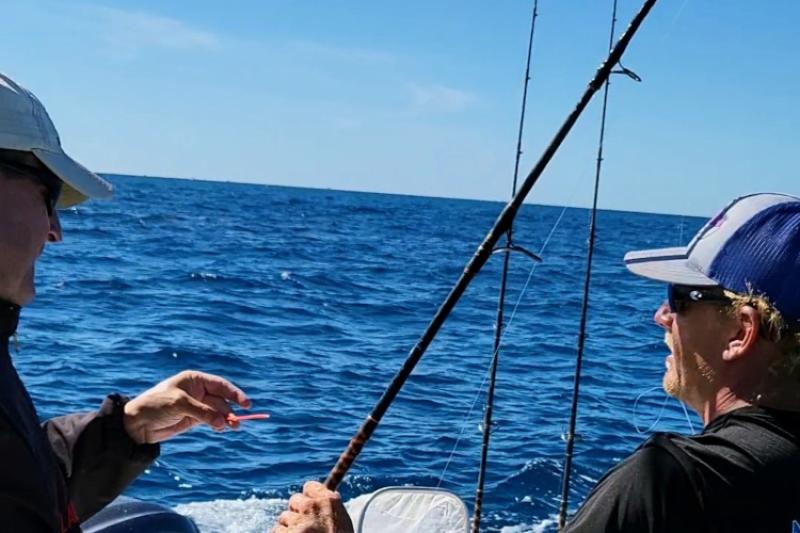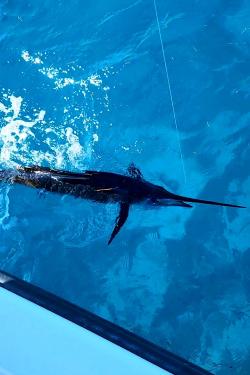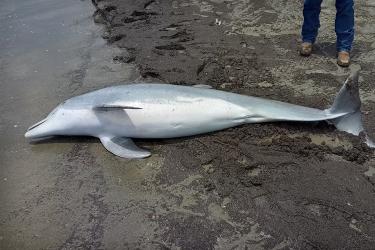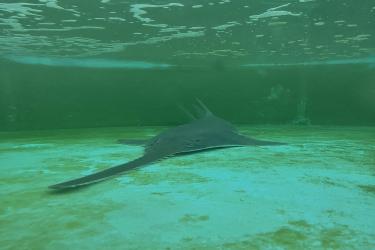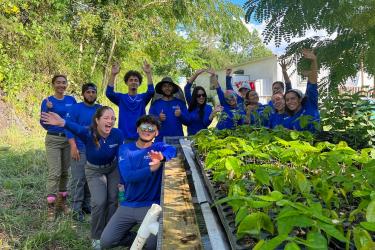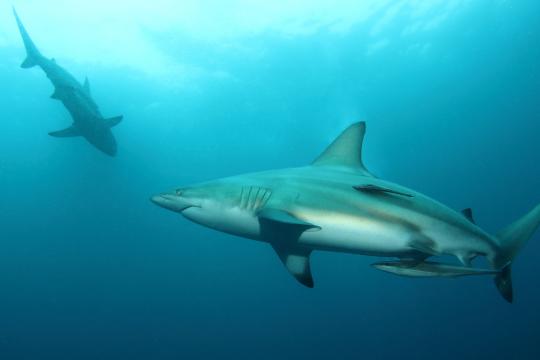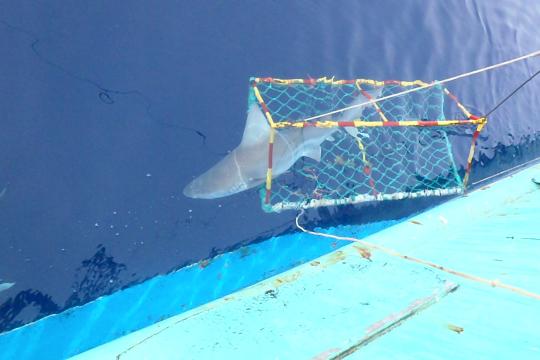Against the Odds
On November 30, 2021, a recapture report came in from Captain Paul Ross on his boat Relentless. He suspected that the sailfish they were looking at had been tagged recently because the tag number was very close to those he still had onboard. It was not a tag Ross deployed, but from a sailfish that Captain Alex Adler tagged on Halloween on his charter boat Kalex.
These two boats tie up about a hundred feet from each other and the fish was recaptured within a mile or so of its original release location. Ross replaced the original tag with a new one so we can continue to track this fish.
That day got more exciting when two additional reports came in cataloging catches from a few days before. On November 27, two other tagged sailfish were recaptured. As the NOAA team began recording the details, they started realizing what a rare situation this was.
One fish had been tagged six months earlier off the coast of Miami from the charter boat Billin Office with Captain Nelson Delatorre. Captain Mike Brady on Cowpoke and angler Allie Schelin, recaptured it off of Ft. Pierce, Florida–about 120 miles north of the original release location. Tag HM105951 was 189 days at large.
The second sailfish, also originally tagged by Delatorre on November 13, was recaptured near Conch Reef, offshore of Key Largo. Captain Brian Cone on the charter boat Contagious and angler George Burkhart from the Atlanta Saltwater Sportsman’s Club caught it about 60 miles southwest of its tagging location. Tag HM106537 was 14 days at large.
“Having two sailfish tagged on the same boat get recaptured on the same day at about the same time has only happened one other time, in 1992,” said Derke Snodgrass, fishery biologist with NOAA’s Southeast Fisheries Science Center. “We were quite surprised given the low chances of catching a tagged sailfish, let alone one that was tagged by a specific individual. To have two recaptures occur practically within minutes of each other is almost unbelievable. To have those two fish originally tagged by the same captain just boggles the mind.”
Why Tag Billfish?
Over the last 10 years or so, approximately 8,500 sailfish in the Atlantic have been tagged. They are monitored by NOAA, The Billfish Foundation, and Gray FishTag. NOAA works with other organizations and many volunteers to tag sailfish and other highly migratory species, including tunas, swordfish, and other billfish. They depend on the fishing community, tournament operators, and other participants to report any recaptures.
Recaptures can tell us a lot of information about a fish. First, we know that the fish is still alive. This allows us to estimate the age of the fish and better understand the lifespan of the species. Recaptures also give us data on the fish’s location and compare where we saw it last, and how far it may have traveled. All of this helps us better manage these highly migratory species.
“These two recaptures demonstrate that these fish use a wide range of the Florida coast for most of the year,” Snodgrass said. “That these fish went opposite directions could just be a factor of their time at large but it also supports the notion that the prime sailfish times in any given area may be shifting away from what was thought to be a known seasonal abundance pattern.”
Tag, You’re It
Our cooperative tagging program depends heavily on volunteers—–charter captains, anglers, and other recreational and commercial fishermen who are frequently out on the water. Volunteers not only tag and release billfish (sailfish and marlin), tuna, and swordfish, but also report when they have recaptured one. By recording interactions with tagged fish, scientists are learning more about when and where the fish migrate, and the range of their habitat. They also learn seasonal patterns, shifts in behavioral changes, and other aspects of their ecology, as well as post-release survival. All of this information leads to a more sustainably managed fishery.
The program, and those we partner with, depend on the participation of fishermen who are out on the water. From tagging fish, to reporting your catch if you’ve caught a previously tagged fish, most of the information we have has been collected by enrolled volunteers. To enroll in NOAA’s Cooperative Tagging Program please email tagging@noaa.gov.
